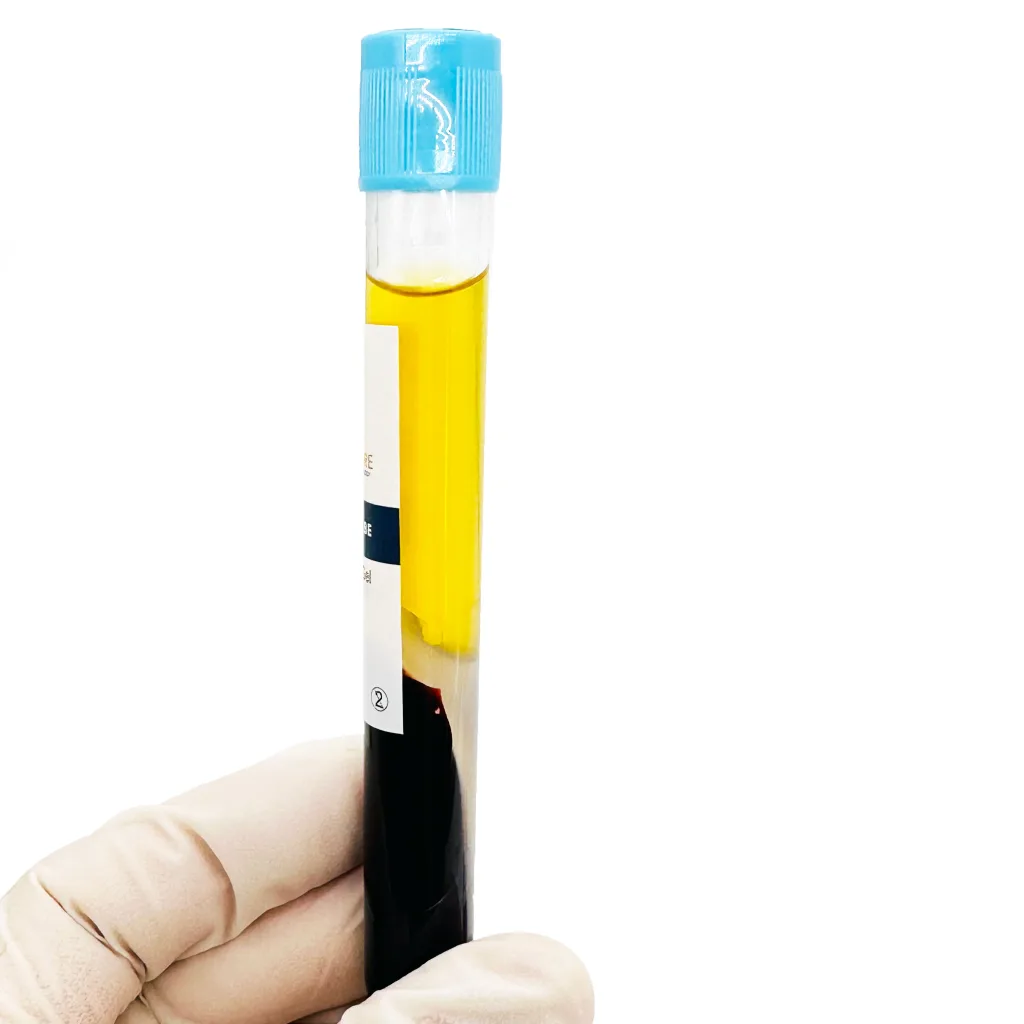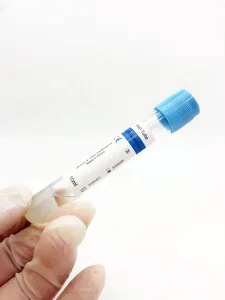Platelet-Rich Plasma (PRP) therapy is a rapidly expanding treatment utilized by dermatology, hair restoration, and aesthetic clinics worldwide. Yet, selecting the appropriate PRP tube—specifically, deciding between those with an activator and those without—is crucial and often complex. This choice directly impacts the quality, purity, and safety of the final PRP product, which is essential for clinical success.
Essential Definitions for PRP Tubes
Understanding the core components of a PRP tube is the foundation for making an informed purchasing decision:
1. Separating Gel (Gel Layer): A medical-grade layer that separates the plasma from the red and white blood cells after centrifugation, ensuring a high-purity PRP product that is easy to extract.
2. Activator: Manufacturers add activators to PRP tubes to stimulate platelets and trigger immediate growth factor release after centrifugation. Common activators include calcium chloride, calcium gluconate, and thrombin. These substances mimic the body’s natural clotting response and cause rapid platelet degranulation.
3. Anticoagulant: A substance, such as ACD (Anticoagulant Citrate Dextrose), which is essential for maintaining blood fluidity and preserving platelet integrity during the centrifugation process.
To understand this, it’s essential to start with the basics: what exactly is an activator in PRP tubes?
What Is an Activator in PRP Tubes?
An activator stimulates platelets inside PRP tubes and triggers immediate growth factor release after centrifugation.
Common PRP activators include:
• Calcium chloride
• Calcium gluconate
• Thrombin
These agents mimic the body’s clotting cascade, causing platelets to degranulate rapidly and form a fibrin clot or gel-like matrix.
Activators were historically used in:
• Dental surgery
• Wound healing
• Surgical grafting
• Applications requiring rapid clot formation
However, this approach has limitations in modern injection-based PRP treatments.
PRP Tubes With Activator: Advantages and Limitations
Advantages of PRP Tubes With Activator
• Immediate release of growth factors
• Rapid clot or PRP gel formation
• Useful in surgical or topical applications where structure is needed
Limitations of PRP Tubes With Activator
• Short working time due to rapid clotting
• Reduced control over growth factor release timing
• Less suitable for injections (facial PRP, scalp PRP)
• Additional chemical agents may reduce PRP purity
• Limited flexibility once activation begins
Because activation occurs outside the body, clinicians have less control over biological response timing.
PRP Tubes Without Activator: Advantages and Limitations
Advantages of PRP Tubes Without Activator
• Greater control over platelet activation
• Platelets remain viable and resting after centrifugation
• Natural, in-vivo activation at the treatment site
• Longer working time during procedures
• Widely used in aesthetic, dermatologic, and orthopedic PRP
This approach aligns with modern regenerative protocols that prioritize physiological activation rather than forced chemical triggering.
Limitations of PRP Tubes Without Activator
• Requires understanding of natural platelet activation mechanisms
• Not suitable for applications requiring immediate clot formation

So, Which Is Better?
For most non-surgical applications, PRP tubes without activator are the preferred choice. They offer a more controlled, consistent, and cleaner PRP preparation, aligning with modern regenerative and aesthetic treatment protocols. By allowing platelets to activate in response to the body’s natural signals, you enhance the biological effectiveness of your treatment.
PRP Tubes With Gel vs Without Gel: Why Gel Still Matters
Independent of activator use, separating gel plays a key role in PRP quality.
Medical-grade separating gel:
• Creates a stable barrier between plasma and red blood cells
• Reduces contamination
• Improves consistency between preparations
• Simplifies PRP extraction
PRP tubes without activator but with separating gel are now considered the most balanced option for injectable PRP therapies.
Which Is Better for Most PRP Treatments?
For most non-surgical applications, PRP tubes without an activator are the preferred choice.
They facilitate a more controlled, consistent, and cleaner PRP preparation, which aligns with modern regenerative and aesthetic treatment protocols. By allowing platelets to activate naturally in response to the body’s signals at the treatment site, the biological effectiveness of the treatment is enhanced.
They offer:
• More controlled and consistent preparation
• Cleaner PRP composition
• Better alignment with natural healing processes
This includes:
• Facial rejuvenation
• Hair restoration
• Microneedling with PRP
• Orthopedic injections
PRP tubes with activator remain useful in specific surgical contexts but are no longer the standard for most aesthetic and regenerative treatments.
Why ACD + Gel PRP Tubes Are Widely Used
PRP tubes containing ACD (Acid Citrate Dextrose) anticoagulant and separating gel, without activator, are commonly selected because:
• ACD preserves platelet integrity during centrifugation
• Separating gel ensures clean plasma separation
• No forced activation allows natural growth factor release
• Results are more predictable across patients
This configuration supports controlled, reproducible PRP preparation suitable for modern clinical workflows.
Why IPPOCARE Chooses ACD + Gel Tubes (No Activator)
At IPPOCARE, we choose to offer PRP tubes containing ACD (Anticoagulant Citrate Dextrose) and a medical-grade separating gel, with no external activator. This design reflects a commitment to both safety and performance.
👉 ACD: Maintains blood fluidity during centrifugation while preserving platelet integrity.
👉 Gel Layer: Effectively separates plasma from red and white blood cells, ensuring a high-purity PRP product that is easy to extract and consistent in quality.
👉 No Activator: Enables natural, controlled platelet activation at the treatment site, which clinicians seek in aesthetic, dermatologic, and orthopedic therapies.
Choosing IPPOCARE: Global Supply and Quality Assurance
For global clinics struggling with customs delays, high import taxes, and unexpected shipping fees when sourcing from distant overseas suppliers, IPPOCARE offers a reliable solution.
Our professional-grade PRP tubes are trusted by professionals worldwide and offer key advantages:
✔️ Triple Sterilization: Ensures the tube is safe for medical use.
✔️ No Activator Needed: Provides a cleaner and more natural outcome.
✔️ ACD + Gel Design: Optimized for clarity and consistency.
✔️ Reliable Quality: Trusted by professionals worldwide.
✔️ Backed by Research: Supported by independent studies (available upon request).
If you’re looking for a professional-grade PRP tube that’s designed for real clinical results — simple to use, highly reliable, and optimized for patient outcomes — our ACD + gel PRP tube is the one to trust.

Updated by IPPOCARE | Last reviewed December 2025


